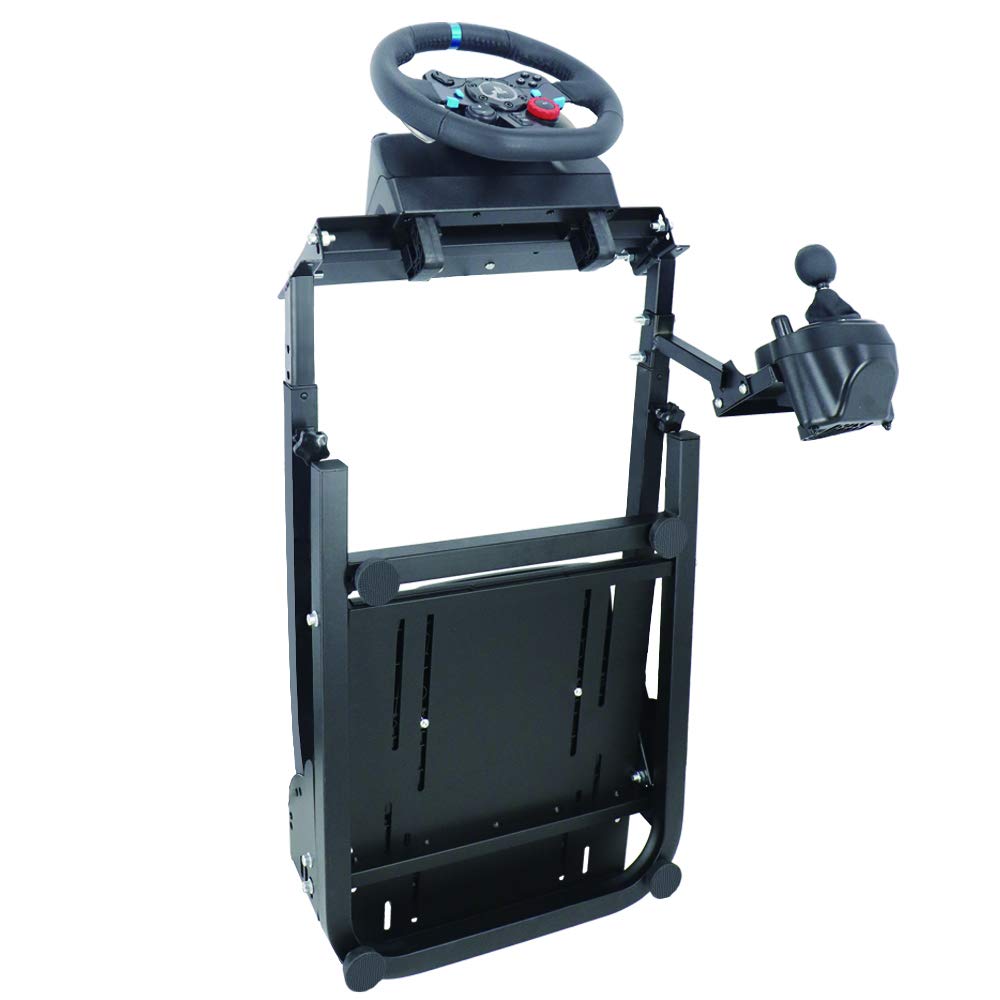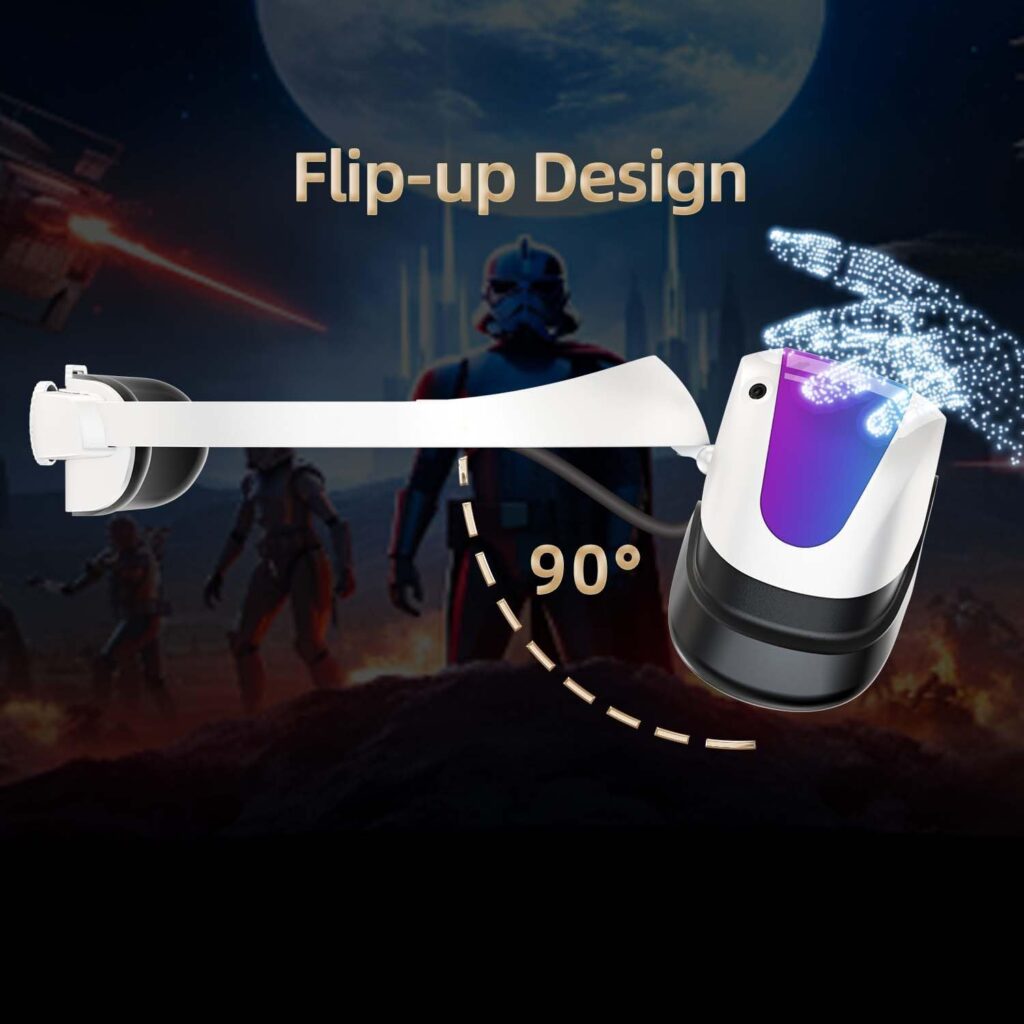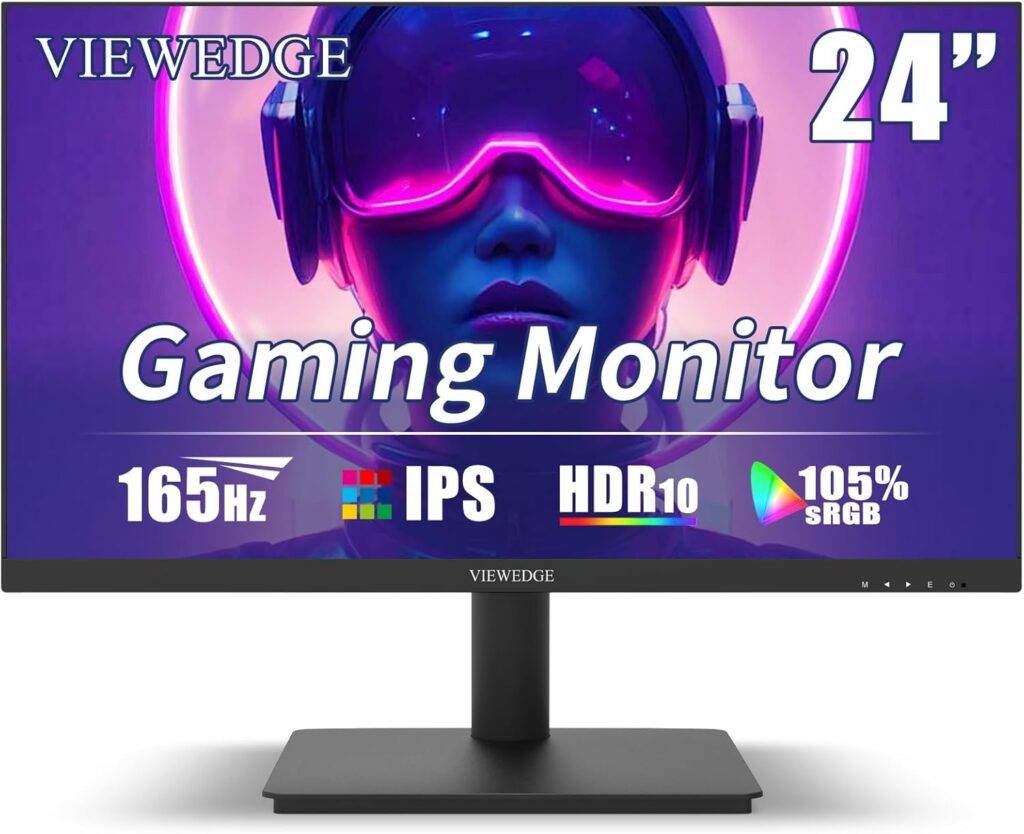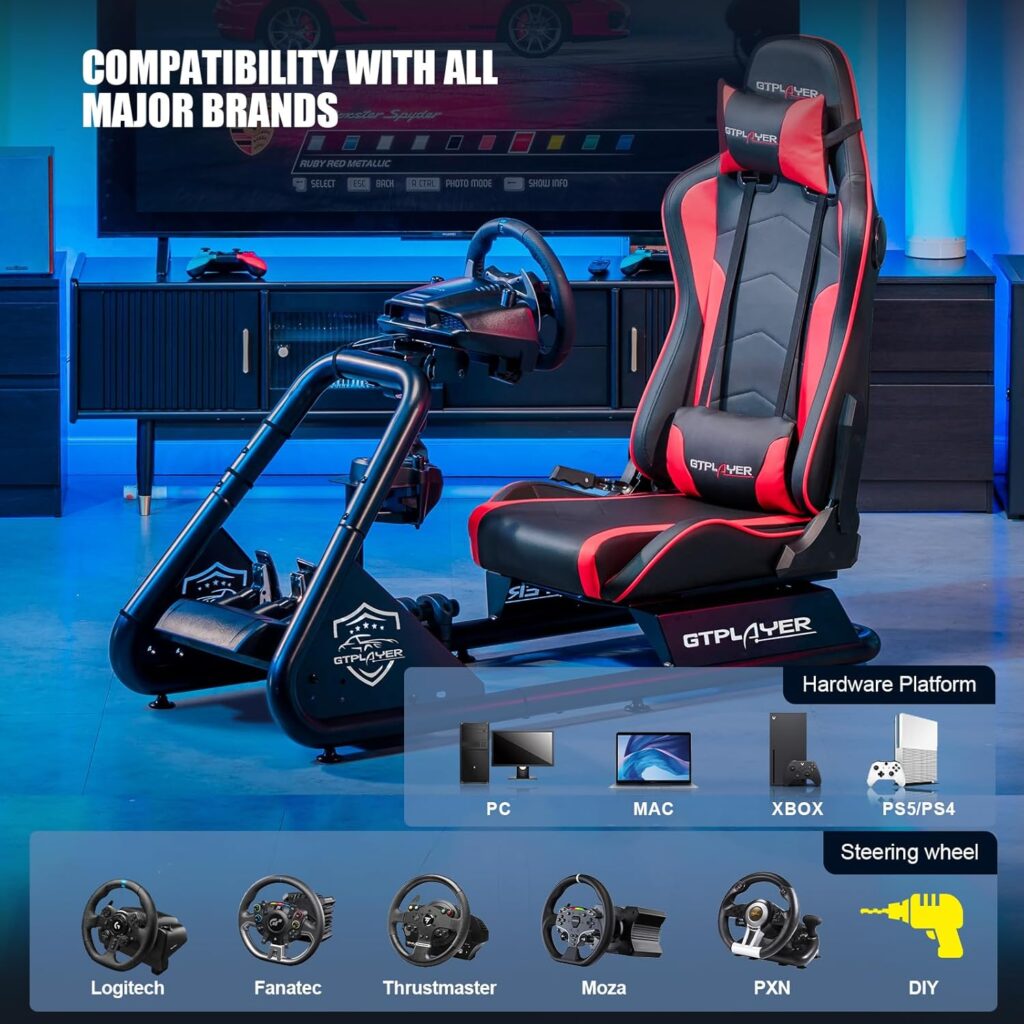Are you tired of the same old sim racing experience? Looking for a way to take your virtual racing to new heights? Well, you might want to consider delving into the world of virtual reality (VR) for your sim racing adventures.
With its immersive experience and realistic graphics, VR has the potential to revolutionize the way you race. But before you make the leap, there are a few factors worth considering.
From enhanced depth perception to physical and technological drawbacks, let's explore whether VR is truly worth it for sim racing.
Key Takeaways
- VR sim racing offers an unparalleled immersive experience with realistic graphics and enhanced depth perception.
- VR headsets provide a wider field of vision and expanded peripheral vision, improving situational awareness.
- Motion sickness, neck strain, and restricted head movements are some drawbacks of VR sim racing.
- Considerations before investing in VR sim racing include overcoming motion sickness, investing in a high-quality VR headset, and considering personal preferences and budget constraints when choosing a display option.
Immersive Experience and Realistic Graphics
Immerse yourself in the thrilling world of sim racing with virtual reality (VR), where the combination of realistic graphics and an unparalleled immersive experience takes your racing adventures to new heights. Sim Racing VR offers a level of realism and immersion that traditional gaming setups simply can't match.
With a VR headset like the HTC Vive Pro or Oculus Rift S, you'll be transported into the driver's seat of high-performance racing cars, feeling every turn and experiencing the adrenaline rush like never before.
One of the most striking aspects of Sim Racing in VR is the visual experience. The improved hardware quality and screen resolution of VR headsets make the graphics incredibly realistic and visually attractive. Every detail of the racetrack, from the textures on the tarmac to the surrounding scenery, comes to life in stunning clarity. This heightened level of visual fidelity enhances the overall immersion and makes you feel like you're truly in the driver's seat.
Moreover, Sim Racing in VR offers a wider field of vision compared to traditional gaming setups. This wider field of view gives you a better sense of your surroundings, making it easier to judge corners accurately and react to other cars on the track. It also enhances your online racing performance, allowing you to be more competitive and enjoy intense 1-on-1 battles with other players.
The sense of speed is another aspect that's intensified in VR. With the combination of realistic graphics and the feeling of being inside the car, the sense of speed becomes more visceral and satisfying. Whether you're racing on a straight stretch or maneuvering through a tight corner, the adrenaline rush is undeniable.
In games like DiRT 2 and Project Cars, Sim Racing in VR truly shines. The realism and immersion provided by the VR experience make these games highly enjoyable and preferred by many racing enthusiasts. With the ability to look around and fully immerse yourself in the virtual world, you'll feel like a professional racer competing on world-class racetracks.
Enhanced Depth Perception and Peripheral Vision
With enhanced depth perception and peripheral vision, sim racing in VR takes your racing experience to a whole new level of realism and immersion. VR racing offers a much better sim racing experience compared to traditional methods, such as a triple screen setup. Let's take a closer look at how VR enhances your field of view.
| Triple Screen Setup | VR Racing | |
|---|---|---|
| Field of View | Limited to screens | 360 degrees |
| Immersion | Less immersive | Highly immersive |
| Realism | Limited depth perception | Enhanced depth perception |
| Peripheral Vision | Limited peripheral vision | Expanded peripheral vision |
| Cost | Expensive setup required | Affordable VR headsets |
VR headsets provide a much wider field of view compared to a triple screen setup, allowing you to see more of the track and your surroundings. This expanded field of view greatly enhances your immersion in the virtual racing world. Additionally, VR racing offers enhanced depth perception, making it easier to judge distances and corners accurately, leading to better racing performance.
Another significant advantage of VR racing is the expanded peripheral vision. With VR headsets, you can see your opponents and track details at the edges of your vision, just like in real-life racing. This increased awareness of your surroundings can help you anticipate and react to on-track situations more effectively.
Furthermore, VR racing is a more cost-effective solution compared to setting up a triple screen setup. VR headsets are becoming increasingly affordable, making it more accessible for racing enthusiasts to experience the best VR racing games.
Physical Drawbacks of VR Sim Racing
While VR sim racing offers an unparalleled level of immersion and realism, it's important to be aware of the potential physical drawbacks that come with this virtual experience. Here are some physical drawbacks to consider when driving in VR:
- Motion sickness: One of the most common side effects of VR sim racing is motion sickness. Symptoms may include queasiness, nausea, dizziness, headaches, and fatigue. However, many individuals find that they can overcome this issue with time and practice.
- Neck strain: VR headsets can be heavy, and wearing them for extended periods of time can cause strain on the neck. It's important to adjust your posture and take regular breaks to reduce the risk of discomfort or injury.
- Head movement limitations: While VR provides a 360-degree view, the headset can sometimes restrict certain head movements. This can impact your ability to check mirrors or look over your shoulder, affecting your overall driving experience.
- Adjusting to depth perception: Depth perception in VR may take some getting used to. The virtual environment may not perfectly match real-life distances, which can be disorienting at first. However, with practice, most users are able to adapt and accurately judge distances.
- Frame rate and refresh rate: Low frame rates or refresh rates in VR can lead to motion blur or lag, which can cause eye strain and discomfort. It's important to ensure that your VR setup meets the recommended specifications for optimal performance.
Technological Drawbacks of VR Sim Racing
Considering the physical drawbacks of VR sim racing, it is important to also explore the technological limitations that can impact the overall experience. While VR headsets offer an immersive experience, they still have some drawbacks compared to high-quality monitors. One of the main concerns is the screen resolution. VR headsets may suffer from the screen door effect, where the gaps between pixels become visible, affecting the clarity of the image. Additionally, the pixel visibility can be a limitation, especially when trying to judge corners accurately.
To help convey a deeper understanding of the technological limitations, the following table highlights the differences between VR for sim racing and other display options:
| Display Options | Pros | Cons |
|---|---|---|
| VR Headsets | Immersive experience | Screen resolution limitations |
| HP Reverb G2 | Great VR performance | High cost |
| Triple Screens | Wider field of view | Limited immersion compared to VR |
| Ultra-Wide Monitor | High screen resolution | Narrow field of view |
While VR can provide great immersion and the ability to look around the virtual environment, it is essential to consider the drawbacks. Investing in a high-quality VR headset like the HP Reverb G2 can help mitigate some of the limitations. However, it is also worth exploring alternative options such as triple screens or an ultra-wide monitor, which can offer better screen resolution and a wider field of view. Ultimately, finding the best display option for sim racing depends on personal preferences and budget constraints.
Cost Considerations for VR Sim Racing
VR sim racing can be a costly investment, requiring high-performance equipment and additional considerations, such as custom lenses for those who wear spectacles. Before diving into the world of VR sim racing, it's important to consider the cost implications.
Here are some cost considerations for VR sim racing:
- VR Headset: The cost of a VR headset can range from a few hundred dollars to over a thousand, depending on the brand and features. It's essential to choose a headset that offers high resolution and a wide field of view for an immersive experience.
- High-performance Computer: To run VR smoothly, you'll need a powerful computer with a fast processor, ample RAM, and a capable graphics card. Upgrading your existing setup or purchasing a new one can add to the overall cost.
- Custom Lenses: If you wear spectacles, you may need to invest in custom lenses for your VR headset. These lenses ensure optimal clarity and comfort during gameplay, but they come at an additional cost.
- Game Titles: Popular racing franchises like Assetto Corsa offer VR compatibility, but not all games do. Consider the availability and cost of VR-compatible games before making the investment.
- Long-term Comfort: Extended VR sessions can be physically demanding and uncomfortable for some users. Investing in additional accessories such as ergonomic chairs or cooling fans can enhance comfort but also add to the cost.
While the upfront cost of VR sim racing may seem steep, the benefits of a more immersive and realistic racing experience can outweigh the expenses. Ultimately, the decision to invest in VR for sim racing depends on your budget and the value you place on the enhanced experience.




